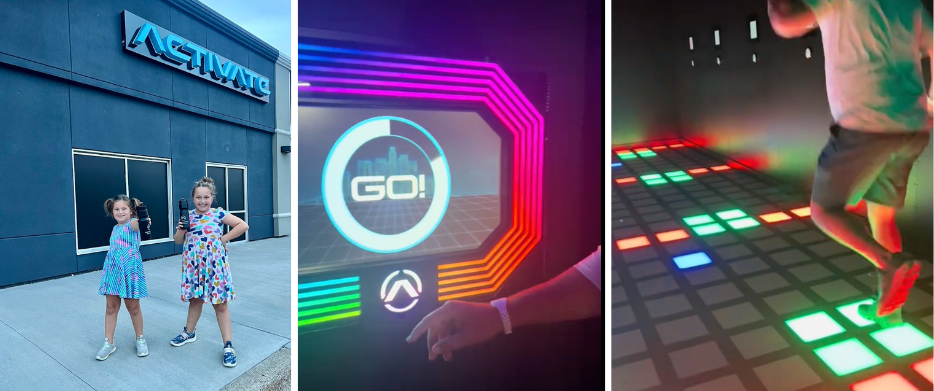Imagine walking into an indoor public health conference and many people are smoking cigarettes. The air is filled with toxic smoke. You might be coughing and likely outraged. It wasn’t long ago that this was the reality of life in public spaces. That is, until public health stepped in and worked to enact smoking bans… Read More » Author information Alison T. Brill Alison T. Brill (she/her), MPH, is a public health expert specializing in equity-based training and technical assistance, capacity building, and cross-sector collaboration within health departments and community organizations. She develops collaborative and effective strategies to improve community health and create systemic change. Alison also serves as the Chair of the APHA Medical Care Section's Health Equity Committee. She holds a Master's of Public Health from Boston University, and a BA in Social Work and Psychology from the University of Iowa. | The post Public Health’s Imperative to Model COVID Safety appeared first on The Medical Care Blog.
Imagine walking into an indoor public health conference and many people are smoking cigarettes. The air is filled with toxic smoke. You might be coughing and likely outraged. It wasn’t long ago that this was the reality of life in public spaces. That is, until public health stepped in and worked to enact smoking bans in indoor public establishments in the U.S., including public places and workplaces, restaurants, bars, and casinos. Surprisingly, smokefree laws have only been passed in 28 states and D.C. to date. Undoubtedly, COVID-19 spreads just like secondhand smoke.
We’re now in year 6 of the COVID-19 pandemic. While many people are tired of hearing about COVID and taking precautions, the pandemic isn’t over. Not by a long shot. Rates of infection are on the rise in many states across the country. As of late 2024, at least 1 in 19 U.S. adults is currently living with long COVID, similar to the rate of diabetes. This number is likely much higher, as many additional cases go undiagnosed or misdiagnosed. Long COVID is a chronic illness that can be debilitating. While COVID is a respiratory disease, it also affects the vascular system. With every new infection someone gets, they increase their risk of developing long COVID symptoms and the numerous serious health complications that go along with it. Not to mention loss of income due to missed days at work, disability, chronic pain and fatigue, and overall quality of life.
 COVID-19 is a Health Justice Issue
COVID-19 is a Health Justice Issue
Pandemics are a health justice issue. The most marginalized groups suffer a disproportionate burden of COVID infection, long COVID, hospitalizations, and rates of death. People who are Black, Indigenous, and People of Color (BIPOC) bear the greatest post-COVID health burdens. Due to long underlying health conditions, barriers to accessing healthcare, social isolation, and increased exposure, people with disabilities experience a greater prevalence of long COVID symptoms. Women are at a higher risk of developing long COVID compared to men. Despite common perceptions, children are as likely as adults to get COVID-19 and experience long-COVID.
Pandemic Fatigue
Pandemic fatigue is ubiquitous. The mitigation efforts to protect ourselves and each other have been nothing short of exhausting and demoralizing. It’s understandable that the majority of people just want this pesky and inconvenient pandemic to go away. However, the reality is that this life-altering virus has ravaged millions upon millions of lives and changed the course of daily life for so many. And yet, the simple actions that can protect people, especially the most marginalized, have gone by the wayside. The very profession that has baked into its fabric and core values to protect the health of the public appears to have, for the most part, forgone many or most safety measures.
Professional Ethics To Do No Harm
The profession of public health is rooted in and driven by the Public Health Code of Ethics. This set of ethical standards and obligations guides individual and collective decision-making. Prevention and mitigation efforts of pandemics like COVID-19 are driven by both individual and collective values and actions. The core values in Section 2, Health Justice and Equity, state that, “Health justice and equity also extend to ensuring that public health activities do not exacerbate health inequities.” Simply put, our charge in public health is to minimize harm, especially to already heavily burdened communities. Additionally, the core values in this section, Interdependence and Solidarity, remind us that, “The health of every individual is linked to the health of every other individual within the human community, to other living creatures, and to the integrity and functioning of environmental ecosystems.” In other words, our collective values of community care and solidarity are necessary for minimizing harm and protecting population health.
Public Health’s Call to Action
As public health and healthcare professionals, we understand how airborne viruses like COVID-19 spread, leading to infection, and sometimes hospitalization and death. And yet, there is room for growth in how we protect each other in public spaces. If public health and healthcare professionals aren’t taking precautions and modeling COVID safety, how can we expect others to? Most hospitals no longer require masking for patients or staff when we know that universal masking in clinical settings prevents the spread of infection. Most in-person health events lack any requirements or best practices for COVID safety. There have even been COVID outbreaks at public health conferences. Disability Justice principles urge us to follow the lead of those most impacted and commit to collective care, access, and liberation.
 Harm Reduction Measures
Harm Reduction Measures
Harm reduction measures include masking, testing, vaccination requirements, air filtration systems, social distancing, and efforts made to gather and eat in outdoor spaces when possible. One study from 2022 showed that when safety measures at conferences are taken, COVID risk is significantly reduced. Providing meaningful remote options for meetings and events ensures that everyone has equitable access to participate while keeping everyone safe. We can, and should, be advocating for COVID protections, and therefore, more inclusive and accessible spaces for all.
Practices That Protect Public Health and Increase Accessibility For All:
- Requiring N-95 or higher masks at all in-person events.
- Holding events outdoors whenever possible.
- Meeting in spaces that have ventilation (open windows and fans) and HEPA air filtration systems.
- Holding events and meetings online or offering a meaningful hybrid option whenever possible.
- Check out these Guidelines for Safer In-Person Gatherings.
- The People’s CDC has a Speaker’s Bureau to support your COVID-conscious efforts.
Organizations Modeling COVID Safety and Consciousness
- Socialism Conference
- Massachusetts Public Health Association Conference
- Public Health Communications Collaborative 2025 Virtual Conference
- National Council on Family Relations
- Clean Air Club
- Long COVID Conference (hosted by the LaTrobe Institute for Molecular Science)
Public health and health care are unique in that they are our professions, but they are also deeply personal. We are all interconnected and need each other to survive. If we can prevent even one person from getting infected, we have a personal and professional responsibility, and a moral obligation, to do so. As civil rights activist and politician, John Lewis, aptly said, “If not us, who? If not now, when?” Let’s commit to keeping each other and our communities safe and healthy.
Author information

Alison T. Brill
Alison T. Brill (she/her), MPH, is a public health expert specializing in equity-based training and technical assistance, capacity building, and cross-sector collaboration within health departments and community organizations. She develops collaborative and effective strategies to improve community health and create systemic change. Alison also serves as the Chair of the APHA Medical Care Section's Health Equity Committee. She holds a Master's of Public Health from Boston University, and a BA in Social Work and Psychology from the University of Iowa.
The post Public Health’s Imperative to Model COVID Safety appeared first on The Medical Care Blog.












